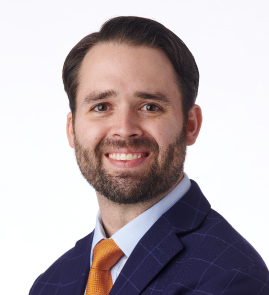The Annual Meeting of the American Academy of Ophthalmology is the marquee event for ophthalmology, with presentation of landmark research, unveiling of innovative technology, hundreds of educational symposia, and updates on the dynamic ophthalmology marketplace.
What was the hottest topic at AAO 2017?
I’m not referring to the topic with the largest symposium audience, or the topic covered by the trade journals or media outlets. I’m referring to the topic most discussed among colleagues at the bar, whispered among friends between meetings, or nervously researched by anxious ophthalmologists seeking answers. So what was this hot topic?
The return of private equity to ophthalmology.
Background
Up until the mid-1990s, the majority of ophthalmologists practiced in solo and small to medium-sized practices, with succession planning and growth taking place primarily between physicians. The mid-1990’s economic boom, the emergence of consolidated healthcare systems, and physician uncertainty about the future created an opportunity for private, non-physician investors to purchase ophthalmology practices, in what is known as private equity. However, within a few years, poor management decisions by the private equity firms charged with running the purchased practices, coupled with a downturn in the economy, led to a poor secondary market for the purchased practices and poor investment returns to equity shareholders and physicians, drying up private equity investment in ophthalmology – at least until its recent return in the last few years, but especially within the last 12-18 months.
What is private equity?
Private equity involves, at its most rudimentary level, capital investments not traded on a public exchange. According to healthcare consultant, Michael J. Parshall in a presentation at AAO 2017, private equity involves investors purchasing a majority ownership (51-100%) of a multi-provider practice and its related entities such as an optical shop or ambulatory surgery center. The market price, or valuation, of a given practice is some “multiple” (often somewhere between 3-12) times the EBITDA (Earnings Before Interest, Taxes, Depreciation, and Amortization) less any debt. The “multiple” is based on the practice’s EBITDA. Practices with higher EBITDA are given a higher “multiple,” thus a higher final market valuation or selling price. Caroline J. Patterson and Mark D. Abruzzo, attorneys specializing in healthcare law also presented at AAO 2017. They explained that the terms of private equity deals vary considerably, but in general, a private equity firm will offer the practice owners 75% cash of the total purchase price, keeping 25% in the form of equity and/or Escrow, to become available once certain terms are satisfied.
Private equity shareholders are typically not looking at such deals as long-term investments, but hope to sell their equity to other investors at a higher price in 3-5 years. In exchange for selling their ownership in the practice and receiving a substantial cash sum, physician owners must agree to continue working with the practice for 3-5 years, with stringent non-compete clauses included in purchase agreements. After the initial purchase, private equity firms then hire healthcare management consultants to assist in running the practice, ensuring stability and growth in anticipation of future liquidation.
One example of private equity success in ophthalmology
Private equity is not new to medicine. The best historical examples include dermatology and dentistry, with their stable, consistent insurance reimbursement for surgical procedures and cash-only procedures that were somewhat insulated from changes in reimbursement, thus diversifying the investment portfolio. In the past few years, private equity investors have turned to orthopedic surgery and ophthalmology, both with high surgical volumes and already-profitable ambulatory surgery centers. According to Patrick Krause with MHT Partners, orthopedic and ophthalmology practices could be worth 10 times more than recent dermatology practice evaluations. Erick Laseca, managing partner at New Orchard Capital, who attended AAO 2017 and with whom I spoke at length, points to EyeCare Services Partners Holdings (ESP) as the prime example of private equity in ophthalmology. Founded in 2014, ESP first purchased the Maryland-based Katzen Eye Group and has since affiliated with over 20 practices around the country. In May 2017, Harvest Partners, LP and Varsity Healthcare Partners, both private equity firms, announced the purchase of ESP, likely providing shareholders a healthy return on their investment.
Is private equity here to stay?
Whether or not private equity is here to stay, is up for debate, and was a hot topic at AAO 2017. According to Erick Laseca, there are approximately 10 private equity firms currently investing in ophthalmology. Prior to 2015, only a dozen or so practices had been purchased by private equity, but in the last two years alone, private equity firms have purchased roughly 60 practices, with considerable growth anticipated in the future. As a managing partner of a private equity firm, Laseca believes private equity in ophthalmology is here to stay. Healthcare consultant, Michael J. Parshall, also believes private equity is here to stay, in part because unlike the 1990s, there are now more private equity firms seeking partners, and those firms have much more capital to invest. On the other hand, Ruth Williams, MD, President of the Wheaton Eye Clinic, has a different perspective, as I discovered in an interview at AAO 2017, and which is posted below. Dr. Williams believes “private equity won’t change ophthalmology all that much…when interest rates go up and the economy changes, this fever of private equity will diminish.” She also pointed out that “because the private equity strategy is typically a 3-5 year play, there are only so many of those plays that one can make before that strategy no longer has a lot of money to be made.”
What are private equity firms looking for?
Many ophthalmologists wonder what characteristics a practice must have to be attractive to private equity investors. In his presentation at AAO 2017, Mark Abruzzo, JD emphasized that private equity firms are looking for what he calls, “platform” practices with a strong local brand upon which to add additional practices. Abruzzo compared these platform practices to superstar athletes in a competitive free agency market, where the private equity firm pays a premium to sign the athlete to a lucrative contract, and then looks to other, perhaps less “superstar” athletes to complete the team. Erick Laseca, coming from the perspective of a private equity investor, adds that, in addition to seeking the “platform practice,” he looks for three main criteria, 1) EBITDA greater than $3 M, 2) Approximately 60/40 ophthalmologist to optometrist ratio, and 3) established ownership of an ambulatory surgery center.
So, what should we do?
First, let’s be clear. I am just a doctor, and the ink on my residency graduation certificate has barely dried. I have never even signed a real employment contract beyond those required for residency and fellowship! That being said, I have at least a decent understanding of this issue, and recognize both pros and cons to private equity as an ophthalmologist. Here are a few things to consider.
Career-stage
The decision to pursue private equity (or to be pursued by private equity) depends largely on one’s career stage.
- Late-career physicians who first “hung up the shingle” and have spent their career building their practice see private equity as an exit strategy to “cash-out” on their investment. They recognize that today’s “goodwill” is not valued as highly as it was in years past, and appreciate the guaranteed cash upon sale. They also may like the idea of having their legacy-practice be expanded, and may be willing to tolerate someone else running the show and making decisions for a few years until their retirement. Private equity is great for many late-career physicians.
- Mid-career physicians have mostly-established practices and desire both growth-potential and long-term stability. They are less risk averse than their predecessors, and recognize that the benefits of consolidation include greater negotiating power with insurance companies, greater market share, and increased insulation from local competition. However, according to experts, the break-even point for private equity is about 12-14 years. Mid-career physicians must consider whether cash now and the potential for a return on their investment is worth a lower annual salary (not to mention other non-monetary costs of being an employee to the practice they previously owned). Private equity is good for many mid-career physicians.
- Early-career physicians who have completed their partnership buy-in stand to benefit from the cash sale of their practice to private equity. However, they may have entered the practice with the intention of long-term practice ownership, and will instead now become minority-shareholders and employees to the majority-shareholder private equity firm. If they want to leave the practice, they will be bound by stringent non-compete clauses, which may be even more restrictive than their initial employment/partnership contract. Worse still, early-career physicians who are still associates but hoping to one day become partners, will not receive the same initial cash-infusion as the partners just a few years their senior, and may be dissillusioned by the possibility of spending valuable years building a practice under management that may be less interested in long-term capital investment in the practice, and instead more interested in short term preparation for the next sale. Private equity, in many cases, may be bad for young physician partners, and is almost certainly very bad for associates.
Historical precedent is lacking
Aside from the recent “success” story of ESP highlighted above, the only historical precedent of private equity in ophthalmology is that of the failed attempts in the 1990s. The current “free-agency market,” with investors in a feeding frenzy to acquire practices is exciting and intriguing, but without having heard success stories from one’s fellow colleagues, many ophthalmologists will be weary of private equity, as it is like investing your retirement in a completely new mutual fund without any history of success. On the other hand, being an early adopter may be the most profitable, with high-risk high-return, as the current feeding frenzy is certainly a seller’s market.
“My practice is my baby”
A leading fear among ophthalmologists is that of relinquishing majority ownership to a private equity firm who then makes changes that harm the practice and upset their patients and employees. In one session at AAO 2017, Mark Abruzzo recalled a dermatologist, who, years after selling to private equity, received a letter from a longtime patient listing their grievances, many of which he attributed to poor management by the equity firm after the sale. Physicians considering private equity should have a clear understanding for how the practice will be managed after the sale, and by whom.
The young eye-doc dilemma
As mentioned above, young ophthalmologists stand to lose the most in private equity deals. They may feel slighted, and, in some cases, may not feel their voice is valued equal to their more senior partners. However, these young ophthalmologists are crucial to the short, medium, and long-term success of the private equity deal. Inasmuch as most deals require physicians sign a new employment contract, if they are unhappy with the terms, they are unlikely to stick around. Healthcare consultant Michael J. Parshall, recommends that practices offer non-partner associates some form of ownership in the deal to incentivize them to stay. Furthermore, according to one of the experts with whom I spoke this past week, a private equity deal with a smaller practice may fall through if even just one young associate does not agree with the equity sale and plans to leave as soon as possible.
Consolidation will increase – independent of private equity
Consolidation of smaller practices via mergers, partnerships, and acquisitions has been going on for decades. These deals were typically funded by the physician owners or by a handful of private investors, though physicians maintained majority ownership and remained responsible for the day-to-day operations and long-term strategy. Whether or not practices choose to partner with private equity, the overwhelming trend in healthcare is toward consolidation. Small and moderate-sized practices may choose to consolidate in order to maximize insurance reimbursement, decrease overhead, and increase market share, further insulating from future uncertainty. This next point is very important. Practices may consolidate for all the reasons just mentioned, but they may also consolidate in order to package themselves into a larger, more diverse, and more profitable entity, becoming more attractive to private equity. Future consolidation will increase due to this overall trend in healthcare, and this consolidation will further drive private equity investments.
It’s good to be big, but it is possible to be TOO big
The ideal practice for private equity is the small to medium-sized practice with a strong local brand, an ASC, and EBITDA of at least $3M – to serve as the “platform” for additional consolidation. Very large practices began consolidating years ago, and are so large that the “multiple” required for such a purchase may limit the market for both initial private equity investors and secondary investors in 3-5 years when the initial investors are looking to sell. I think of this as similar to the cable TV show “MTV Cribs,” which tours the homes of wealthy public figures like athletes and musicians. When these homes go on the market, they are priced way-above what is affordable to most homebuyers, obviously limiting the homebuyer market. That being said, the pooling of capital by many wealthy investors may be sufficient to purchase a very large practice, but the shareholder’s return on investment is contingent upon sale to other future investors, the pockets of whom may not be sufficiently deep. Furthermore, big practices have already consolidated – they dominate their respective markets, and quite honestly, don’t need private equity – at least right now. Big practices have the power-play, and don’t lose much by waiting a bit longer to see what happens in this dynamic marketplace.
Conclusion
There has never been a more exciting time to be an ophthalmologist. We have innovative and exciting new technology, incredible medications that really work, and evolving surgical techniques. We are not immune to financial pressures, as they frequently contribute to our clinical decision-making, our prescribing patterns, and our surgical/technological purchases. Practice growth and private equity are no different – they must be given appropriate due diligence and attention, but must be kept in check, as the most important shareholders are our patients, and they must always remain our #1 professional responsibility. It will be very exciting to see how private equity evolves in our field. At the end of the day, however, I agree wholeheartedly with Dr. Ruth Williams when she said that the most important thing is for young ophthalmologists to “not be too nervous about it (private equity), but to recognize it for what it’s worth. We must do what we’ve always done, which is focus on our core values, providing fabulous eyecare to our patients.”
Acknowledgments:
Thank you to the American Academy of Ophthalmology for facilitating educational symposia for Academy members to learn about private equity at the Annual Meeting. Thank you also to the following industry experts who graciously shared with me their time and knowledge: Michael J. Parshall of the Healthcare Group, Caroline J. Patterson and Mark D. Abruzzo of Wade, Goldstein, Landau & Abruzzo, P.C., and Erick Laseca at New Orchard Capital., and Ruth Williams, MD of the Wheaton Eye Clinic.
My interview with Ruth Williams, MD, discussing private equity in ophthalmology








